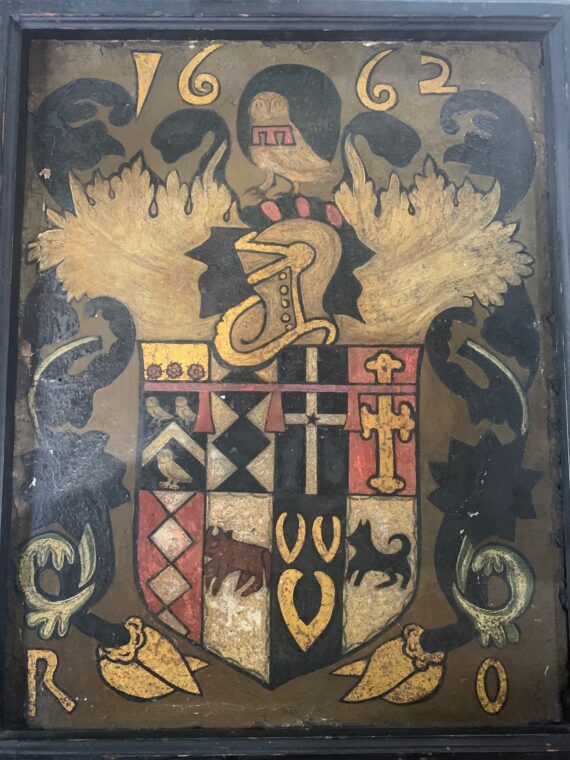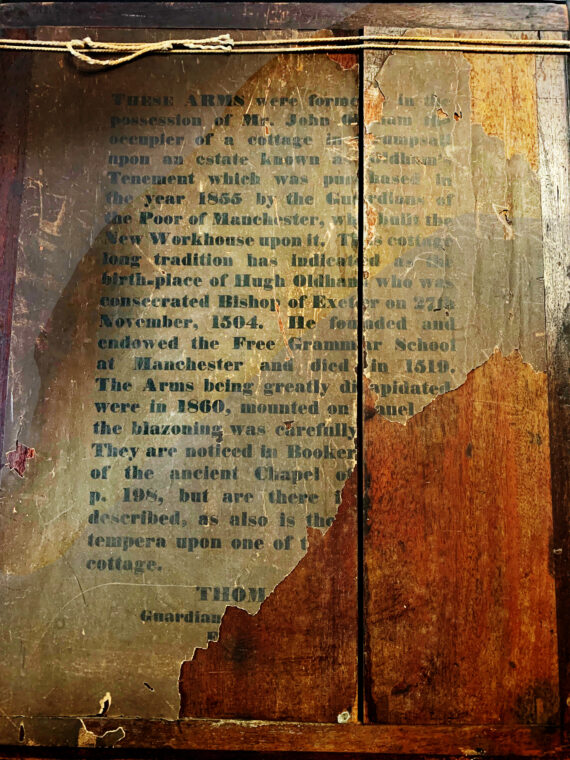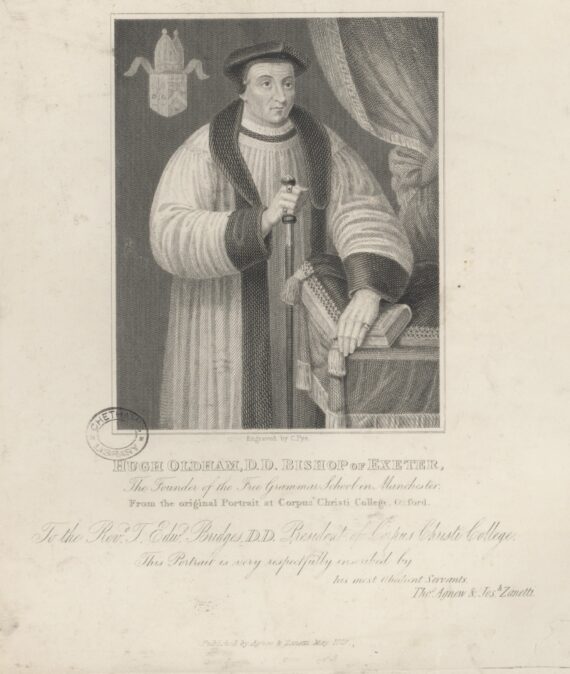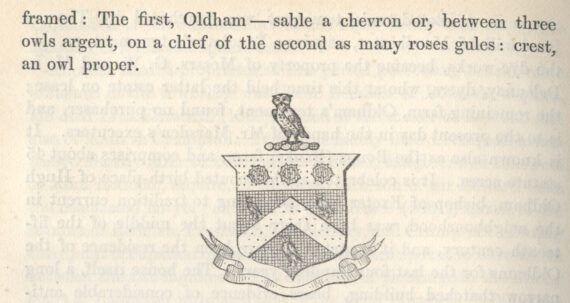- About
- Visiting
- What’s On
- Venue hire
- Catalogues
- Collections
- 101 Treasures of Chetham’s
- Digital Resources
- The Flowers of Histories
- A Book of Hours from France
- The Manchester Scrapbook
- Thomas Barritt of Manchester
- Art Treasures Examiner of 1857
- Manchester Association for Constitutional Order
- The North Western Museum of Science and Industry: Some Reminiscences by Richard Hills
- Criminal Manchester
- The Cup of Destiny
- Athenaeum Souvenir
- Middle English Manuscripts
- Manchester and Liverpool of Today
- Hollingworth’s Mancuniensis
- Memoir of Cecil Wray
- William Seward’s Diary
- The Anti-Monopolist
- Fishwick’s History of Rochdale
- Knyvett’s Defence of this Realm
- Tractatus de Nigromantia
- Axon Ballads
- Printed Books & Ephemera
- Archives & Manuscripts
- Prints and Photographs
- Blog
- Support us
Oldham Coat of Arms

Recently we were cleaning the gallery space in the Library and came across a painting of a heraldic achievement, generally knowns as a coat of arms. It bears the date 1662, but doesn’t give the viewer the impression of being a genuinely 17th-century art work. Interestingly, though the back of the painting provides us with the provenance of these arms. They are linked to the Oldham family, as the description states that they were found in the possession of a Mr John Oldham who was:
‘the occupier of a cottage in Crumpsall upon an estate known as Oldham’s Tenement, which was purchased in the year 1855 by the Guardians of the Poor of Manchester, who built the New Workhouse upon it. This cottage, long tradition has indicated as the birthplace of Hugh Oldham who was consecrated as the archbishop of Exeter on the 27th of November 1504. He founded and endowed the Free Grammar School at Manchester and died in 1519. The arms being greatly dilapidated … were in 1860, mounted on [a p]anel … the blazoning was carefully …’

The damaged printed text on the back of the painting of the Oldham arms.
Unfortunately, as the text continues there are pieces of information that have been lost due to wear and tear so what happened to the arms after this is lacking in clarity. It’s clear that ‘They are noticed in Booker […] of the ancient Chapel […] p.198, but are there i[…] described, as also is the […] tempera upon one of t[…] cottage.’
From this, we can glean that the arms were repaired and mounted in the panel we find them in today, though quite what the method of transference was is not clear to us now. This ‘restoration’ – perhaps very extensive – accounts at least for the item looking like a Victorian reproduction. The ‘Booker’ mentioned refers to John Booker’s A History of the Ancient Chapel of Blackley, in Manchester Parish, and describes the history of the Oldham coat of arms.

Engraving of Hugh Oldham, Bishop of Exeter.
The description from Booker regarding the arms is as follows (p 198):
‘… a History of the Ancient framed: The first, Oldham was sable a chevron or, between three owls argent, on a chief of the second as many roses, crest, an owl proper. The name Oldham was anciently written Ouldam; and the arms are known to heralds as canting arms, from the allusion they contain (the Owl) to the name of the family bearing them …

Hugh Oldham’s Arms from Booker’s Blackley.
… These arms are identical with the coat borne by Bishop Oldham and are inscribed with the initials R. O., and the date 1662. The second shield is divided into eight quarterings, the first only of which can be deciphered, and in this, the bearings are like those just described’.
It is unknown how and when this painting of the coat of arms was acquired by the Library, but it may have made its way into Chetham’s College as a result of proximity with the original site of the Manchester Free Grammar School, founded by Hugh Oldham. Oldham owls still adorn the decorative stonework on the front of the former extension to the Grammar School on Long Millgate, a building which is now part of Chetham’s School of Music. We’ll bring other curios to your attention as they emerge!

3 Comments
Philip Hirst
Not far off the coat of arms at Oldham civic centre!
https://www.heraldry-wiki.com/heraldrywiki/index.php?title=Oldham
ferguswilde
Thanks, Philip! Yes, both the arms and the motto ‘Dare to be wise’ seem to come through Bishop Oldham’s family. Apparently the first use of the motto is Horace, writing around 20 BC, but they still seem fresh enough to keep being used. As I grew up in Oldham it’s a familiar phrase, but whether I have got any wiser is another matter. Hope you enjoyed the blog!
Daniel Oldham
I would love to get a copy of the tapestry to hang in my house I love it thanks sincerely Daniel Oldham